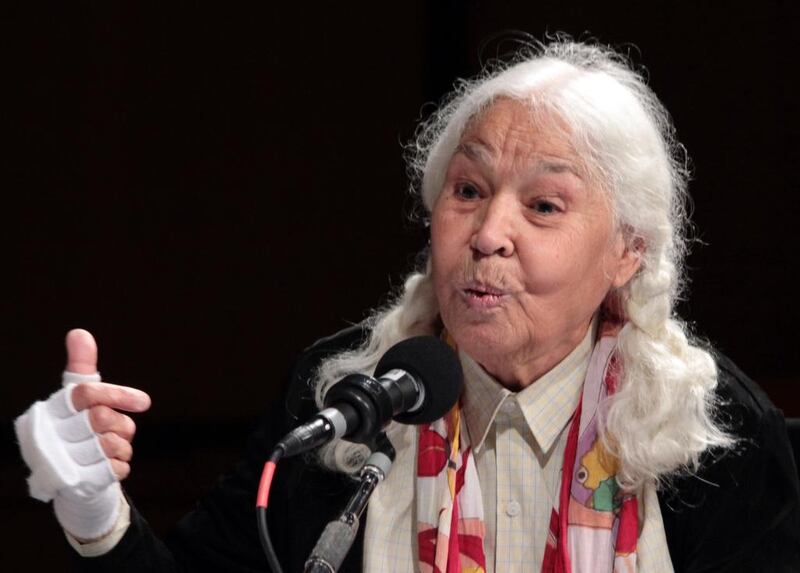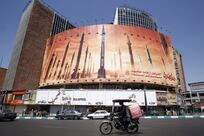The Arab poetess Al-Khansaa lived some time in the seventh century and composed almost exclusively elegiac poetry. She performed this poetry at tribal gatherings across the Arabian Peninsula, to much acclaim. Her poetic nickname means “snub-nosed”.
These are some of the facts you would learn about Al-Khansaa if you looked her up in an English-language anthology, in which her name and work might have been included as an example of the earliest poetry written by Arab women. Of this little bouquet of facts, the last one should particularly attract your notice.
It is an incorrect translation. As scholar Michelle Hartman has recently pointed out in an essay on the mistranslation of Arab women writers, “Al Khansaa” is a feminine form referring metonymically to a “flat-nosed animal”, such as the gazelle. A gazelle, we can all agree, is rather different from “pug-nosed”, which in the Western imagination refers to a small dog.
The quibble could be let go if it were what it seems, a mistake concerning animal metaphors for long dead poets. Alas, it is much more than that; representing in succinct form the amputation of context that the work of an Arab female writer undergoes when her work appears in English translation.
It is not just that a gazelle becomes a dog, but rather that all the complexities of content are distilled into what the contemporary Arab-American poet and literature professor Mohja Kahf has identified as three ruling categories of Orientalist translation: the escapee, the victim or the pawn.
The categories sometimes overlap. Al-Khansaa in translation is thus sometimes an escapee and at other times a victim. If an English translation is going with the former, then it underscores that she is an exception, a woman whose public role and rebellious nature (an anecdote about how she refused to marry an old man is usually inserted here) must never ever dislodge the dominant fact that Arabia was misogynistic, with little room for women let alone for women poets. In keeping with the former, The Penguin Book of Women Poets is quick to point out that she is “unusual”.
If it is Al-Khansaa the victim that the translator wishes to go with, no estimations of stylistic form or aesthetics (such as would be reserved for western poets) need to be made. In their place, all that needs to be mentioned is that Al-Khansaa wrote mainly about the men in her life, specifically brothers who were slain in battle. The conclusions can then easily follow: Al-Khansaa only wrote this form of verse because it was ritually permitted to women, her possibilities of having a varied oeuvre shattered on the altar of constriction and convention. She couldn’t have done it even if she had wanted to; she was typical of the women of her age, a victim.
It is important here to note that this filing down of Al-Khansaa cannot be attributed to a lack of temporal proximity, the farawayness of antiquity that has become a barrier to contemporary understanding. The proof of this is in the poetic pudding: the fact that many 19th-Century and even modern Arab women writers have undergone similar treatment even when centuries do not lie between them and their English translators.
In her essay “Packaging Huda: Sharawi’s Memoirs in the United States Reception Environment”, published in Going Global: The Transnational Reception of Third World Women Writers, Mohja Kahf analyses the extent to which existing stereotypes about Arab women transform and limit the range of interpretations of Egyptian feminist Huda Sharawi’s memoirs.
In their English translation, Kahf notes, the author’s satisfactory engagement with Arab men is minimised, her orientation towards Europe is exaggerated, her class privilege is de-emphasised and a story which is largely about public life is re-centered around private life and the harem. In this way, the work that was titled “My Memoirs” becomes “Harem Years”. Sharawi, as Kahf points out, is thus reduced from a global feminist figure, whose writing and observations were empowered within a much larger context than only colonial Egypt, to a local iteration, useful and relevant only to “other” women.
Indeed, the condescension that is so central to the colonial endeavour is visible in the presentation of these colonial subjects like Sharawi. They and their writings are merely beneficiaries of the “liberation” that Western powers brought to the backward and bumbling Arab world.
The end of colonialism did not bring an end to the orientalist paradigm. It did however bring its glib co-option into transnational politics of feminism, one which rewarded Arab women writers who chose intentionally or unintentionally to be the victim, escapee or pawn.
One incident that duly illustrates all of this appears in Amal Amireh’s essay on the work of Egyptian feminist Nawal El Saadawi. The decade between 1975-1985, Amireh notes, was designated as the decade of women by the United Nations, a designation that brought official focus on women’s issues.
One of the issues that captured western feminists’ attention was clitoridectomy or female circumcision. By 1982, a UN conference was convened and El Saadawi was invited. The New York Times, in its piece on the conference, connected the female circumcision, the UN conference on eliminating the practice and El Saadawi’s book The Hidden Face of Eve, which begins with an account of the author’s own clitoridectomy.
El Saadawi’s words and her experience thus became the words of the “escapee” now “speaking out” about the brutality of her own culture. El Saadawi’s own report of the incident (which Amireh also includes) was omitted from mention and discussion.
In an interview, El Saadawi herself had said that she disagreed with Western feminists who wanted inordinately to concentrate on female circumcision as proof of “unusual and barbaric oppression” to substantiate a paradigm of superior humanity. Just like no-one had bothered with the contextual details of Al-Khansaa, no one cared about what El Saadawi actually had to say about the issue and her own work.
Sheared of context, the Arab woman writer, at least any Arab woman writer who aims to have her work read in translation, is thus packaged for a western audience that demands not nuance or complexity but only a reiteration of their existing prejudices, their long-cherished stereotypes. Our current age, rife as it is with imperialist adventurism, is unlikely to bring any change to the familiar recipe of reduction and excision. A whole incentive structure exists to insure that this is so.
Arab women writers who obediently construct and market their work to align with neo-Orientalist expectations can count on many successes. In exchange, they must, like exotic birds, do their part and parade their plumage of oppression and narrate their tale of escape from the brutality of their origins.
Solutions do exist, but their implementation seem largely a fantasy.
The scholars who analyse the reception of the works of these Arab writers of old all insist on the necessity of adding context and complication as an antidote to mistranslation and co-option. It is a good idea, but one limited by the existing power paradigms in global publishing, the fact that as long as the West controls that largely English-speaking market, the vast rest will continue to have their reality, their past, their present, their voices and their words, cut up, sheared, mistranslated and misrepresented.
In this world, their gazelles will be the pug-nosed and their feminists, tattling and prattling native informants, performing for a public that only pities them.
Rafia Zakaria is the author of The Upstairs Wife: An Intimate History of Pakistan





